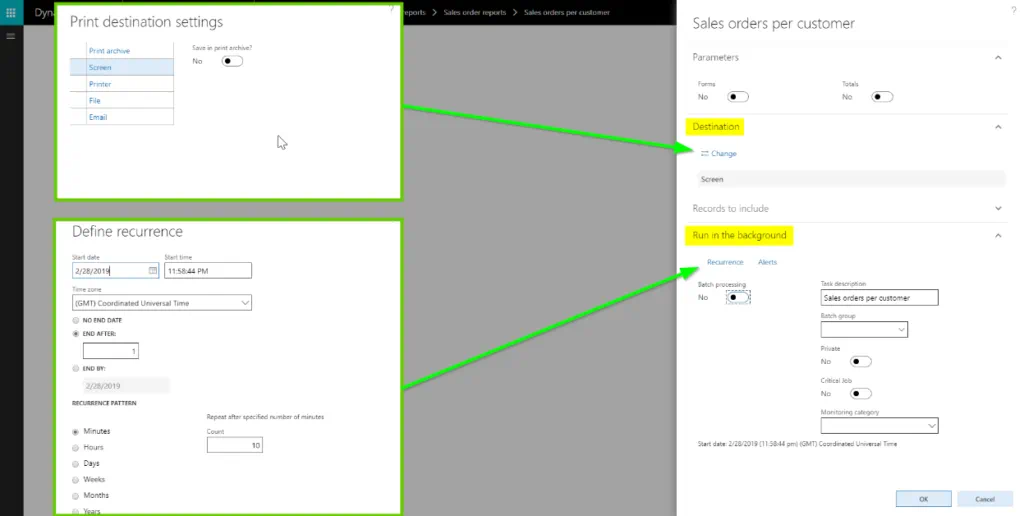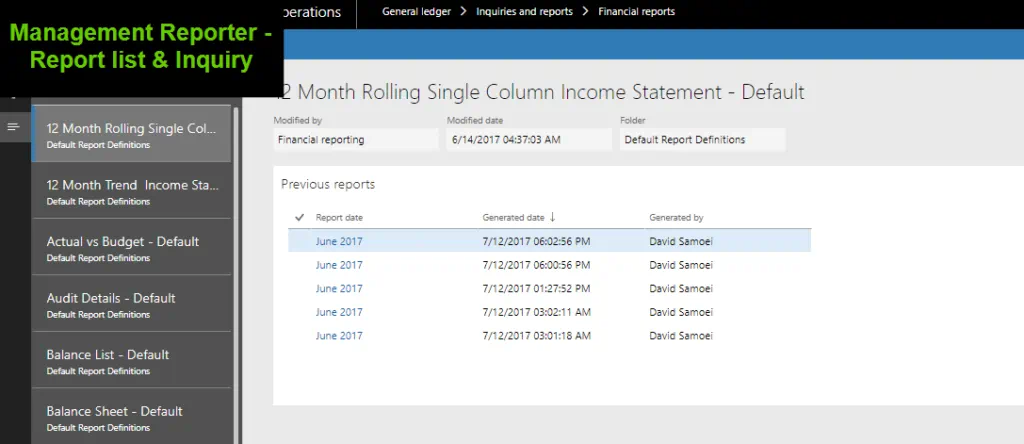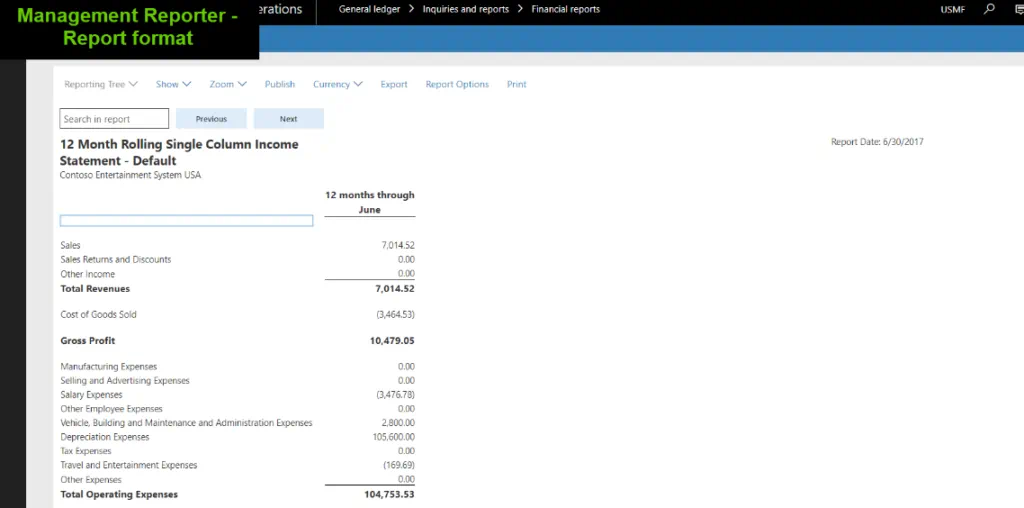

Power BI with Dynamics 365 for Finance and Operations (Part 1): Pin Power BI Dashboard Visuals Within Dynamics 365 Workspaces
In this first blog, I’m going to kick-off the series by sharing step-by-step instructions on how to pin Power BI dashboard visuals within Dynamics 365 for Finance and Operations workspaces. Subsequent blogs will show how to link Power BI reports within the workspaces, and how to use OData connectivity to create Power BI reports directly from the Dynamics 365 entity store.
Read the BlogIn the realm of Reporting in Dynamics 365 for Finance & Operations, there are many different houses that battle for ultimate control of the user experience. Each house represents a different reporting experience. These are the houses of Inquiries, SQL Server Reporting Services (SSRS), Management Reporter, and Power BI Embedded.
Nearly all users will encounter these tools during their work day. Generally, there is a balance for each user’s experience. How does a user determine what reporting tool to use? To find out, let’s venture to each reporting realm:
The House of Inquiries:
Inquiries are a large part of the user experience in D365 F&O. When searching for information, inquiry screens are usually the first place to start. Inquiries are often where users perform actions, but also where users can visualize and export data.

Strengths of Inquiries:
- User Interface Personalization
- Users can personalize inquiry screens to re-order, add, or remove columns and fields.
- Easy filtering capabilities
- Within inquiry screens, users are able to filter via a general search box, or also using the column headers to filter the data for specific values, ranges, exclusions, etc.
- Drill down/hyperlinked fields
- Users can select hyperlinked fields that route them to another screen for more detailed information
Weakness of Inquiries:
- Limitations to Personalization
- There are set fields that can be personalized into the inquiry screen. The available fields are, usually, only those that are contained within the same table as the visible data.
The House of SSRS:
SSRS reports are typically in a document type format. For D365 FO, the most commonly used SSRS reports are printable documents such as the sales and purchase order confirmation, invoice, and packing slip documents. However, there are also many out-of-the-box reports contained in various modules under the sub section of “Inquiries and Reports.” These reports are also usually formatted to fit on pages.

What are House SSRS’s 3 strengths?
- Multiple Export File options / Printability
- On top of printability and PDF/Word export, SSRS reports can be exported as Excel, XML, CSV, MHTML, or TIFF documents, giving you more flexibility. With this ability, SSRS reports are generally print friendly.
- Email Capabilities
- Additionally, SSRS reports can be sent in an email to users upon generation by configuring the destination settings.
- Automatic Generation
- The final advantage of SSRS reports is they can be setup to generate on a per-minute, hourly, daily, weekly, monthly, or even a yearly recurrence. This is setup in the “run in the background” tab when generating the report.
Weakness of SSRS?
- No User Personalization
- Users can filter for specific results, but they are not able to change formatting (sizing, coloring, add/remove fields). For some reports, parameter options are given to allow a user to display specific fields, but any other formatting requests must be done through development.

The House of Management Reporter:
Management reporter is a tool that can enable super users to create their own financial reports without customization or involvement from the IT department. This reporting tool is generally used to prepare financial statements such as income statements, balance sheet reports, and cash flow statements among many others. Using the default reports provided as a starting point, users can branch off to create their own company-specific financial statements.
3 Strengths of House Management Reporter:
- Super user creation
- Trained users will be able to edit and create reports within the Management reporter.
- Great for financial reporting
- Management reporter has access to most financial data contained in D365 FO. These reports can also be exported to excel for distribution among the finance department.
- Automatic Generation
- Like the SSRS reports, Management Reporter reports can be scheduled to generate on a recurrence.
Weakness of Management Reporter:
- Limited to Financial data:
- Management reporter is built to be a financial reporting tool. So, it comes as no surprise that the available reporting data is limited to finance.


The House of Power BI Embedded:
Within Dynamics 365 FO, Embedded Power BI can be enabled. This type of reporting is becoming more popular with users and is growing its power for control of the user reporting experience. Embedded Power BI directly queries the Entity Store to allow the creation of reports on nearly all data contained in the environment. This reporting tool creates a modern and easy to use reporting interface and will surely grow its presence as D365 FO matures. As Power BI is its own platform, I’ll leave the strengths and weaknesses to our Analytics experts here at Hitachi Solutions.
Conclusion:
In conclusion, winter (or Go-live) is coming, and there is only one way to defeat the Night King’s army of report confusion. Rally the houses together to utilize the strengths of each Reporting Tool. Workspaces can be a great tool for users to interact with each of the reporting types from one location. Find out how in the next episode…


